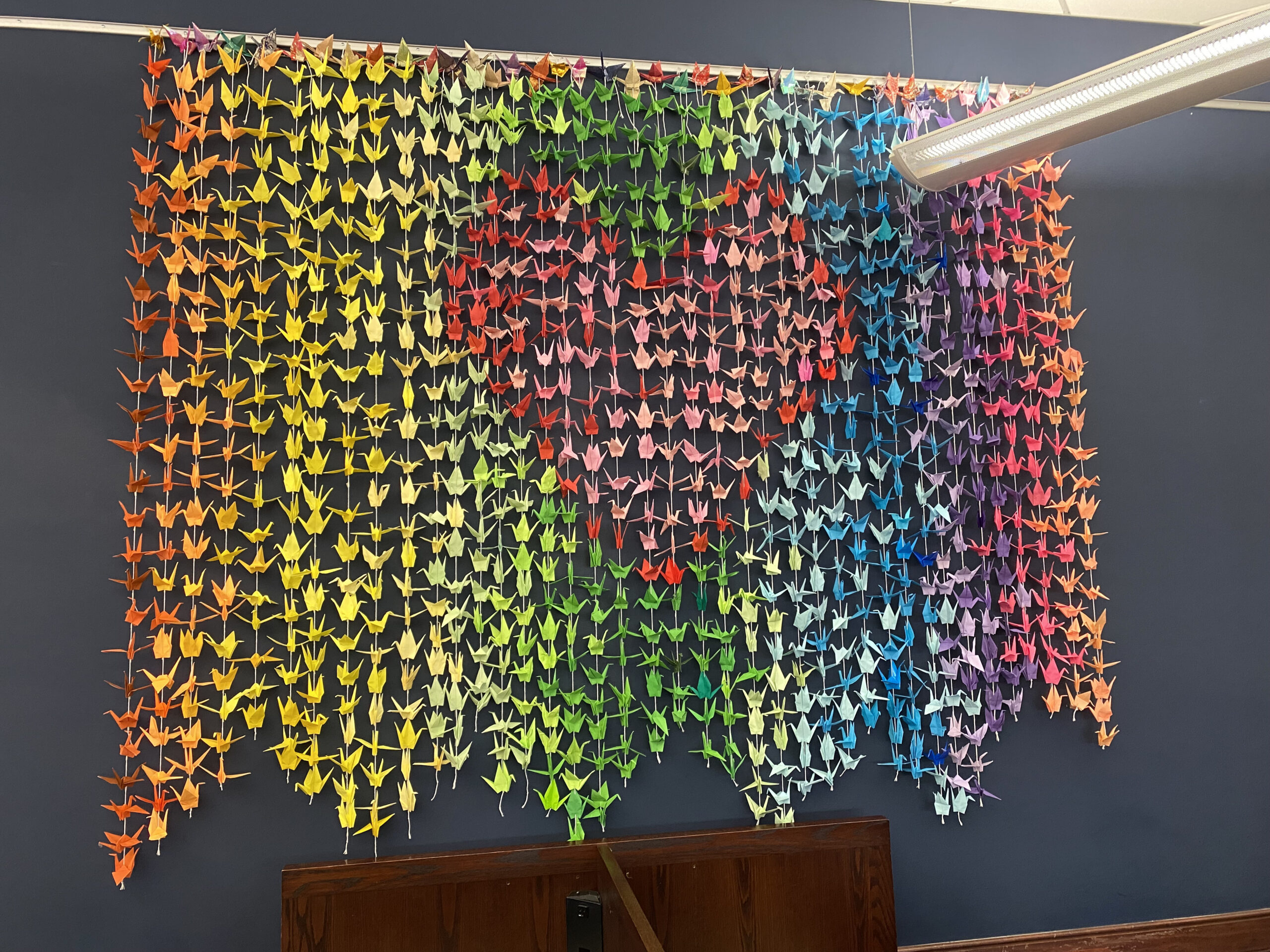(Ethan Kim/Media)
Senbazuru (千羽鶴), meaning one thousand cranes, is now displayed in the library as a sign of good fortune, luck, and health, and to wish well to those who need it.
In Japanese folklore, the crane is one of the holy creatures that can live for more than one thousand years. The legend said that if individuals folded one thousand cranes for someone within a year, the gods could grant them a wish. Today, senbazuru also symbolizes peace, as well-wishers have placed some at memorials such as 9/11 and Pearl Harbor.
Sadako Sasaki, a Hiroshima survivor, popularized the tradition when she developed leukemia from nuclear radiation in 1955. After hearing about the legend from a friend and finding herself with time on her hands, she started folding the cranes. Whether Sadako reached her goal of one thousand is still disputed, yet she inspired countless others to use origami cranes to memorialize a loved one.
During the latter half of September, the affinity leaders of EAST (East Asian Students Together) placed colorful origami paper in the grade-level lounges for students to fold. After gathering the finished products, Cory W., Katie W., and Max Z. discovered over twelve hundred cranes and strung them together to form a heart. The leaders installed the display above the library’s carrels on November 6. Meant as a sign of perseverance after grief, the cranes accomplished this purpose.
The outpouring of dedication, support, and love from the student body to this project was a truly powerful gesture.








